Cassidy Ulery: Curated Blog for Week 4
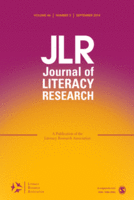 Greetings everyone! For week four of our Theories of Literacy class, we had two readings. The first was “Limits of the Local: Expanding Perspectives on Literacy as a Social Practice” by Deborah Brandt and Katie Clinton, and the second “Éclosions in Literacy Research: Rereading Brandt and Clinton’s ‘Limits of the Local’” by Daniel E. Ferguson and Amélie Lemieux, both hailing from the Journal of Literacy Research.
Greetings everyone! For week four of our Theories of Literacy class, we had two readings. The first was “Limits of the Local: Expanding Perspectives on Literacy as a Social Practice” by Deborah Brandt and Katie Clinton, and the second “Éclosions in Literacy Research: Rereading Brandt and Clinton’s ‘Limits of the Local’” by Daniel E. Ferguson and Amélie Lemieux, both hailing from the Journal of Literacy Research.
Before we began dissecting the readings, Dr. Jaxon shared two videos with the class. First, we watched a movie scene from The Devil Wears Prada, where the implication of Andy’s cerulean sweater derived from the fashion geniuses that took careful time and consideration in choosing a color and style that appeases a variety of consumers. Andy disregards the importance of Miranda Priestly and team’s struggle to choose the appropriate belt for an upcoming photoshoot, which prompts Priestly to scold Andy’s lack of recognition and efforts of the fashion industry behind-the-scenes. In doing so, Priestly points out that Andy’s cerulean sweater was inspired by legend Oscar de la Renta’s gowns he curated and displayed in a 2002 runway show, followed by the infamous Yves Saint Laurent.
The focal point behind showing this clip? Dr. Jaxon correlated the cerulean sweater to Brandt and Clinton’s argument that global literacy connections come from somewhere else. These literacies weren’t formed in our local communities, even when we think we founded them, but that they actually evolved from elsewhere such as Harvard academics. To put it simply, I took this message as a way of saying nothing is original. Everything we know and practice has been invented and stated before. Hayden made a reference to this logic, with him having a musical background, that all musicians know there is no such thing as “new music”. We might be able to make new sounds, however, originality really isn’t that original.
To emphasize Brandt and Clinton’s claim that literacy is material, Tim made an analogy to coal miners. Stating, “everyone might have different purposes for coal, but they are all getting their coal from somewhere.” Tim’s statement reinforces literacy connections are innovations from previous ingenuities. But don’t be fooled, our class had a lively debate whether literacy really is material, if inanimate objects contain their own agency, and what can be defined as a literacy event.
For the second video, Dr. Jaxon showed us Deborah Brandt’s Conference on College Composition and Communication 2017 Exemplar Acceptance Speech. This enabled us to see Brandt visually and hear her speak. Throughout her speech, Brandt made enlightening comments. Particularly when Brandt mentioned “writing remained in my view a manual, not just a cerebral experience (2:36), as well as “Don taught me it’s okay to be a scholar who asked obvious questions. In his class, he would raise the most basic, most earnest, most straightforward, most modest questions. But by the end of the discussion, we inevitably reached profound answers and connected realizations” (3:32). Brandt’s own experience as a student afforded me an epiphany. It’s okay to not know everything. And it’s okay, even when the student has become the instructor, to be vulnerable and honest with the reality that we are never truly done learning. Our interactions with our students and professors grant us the highest privilege: obtaining an education.
Brandt and Clinton’s essay reflected on literacy as a social practice, where they discuss the Great Divide as problematic – no longer being viewed as a debate in the field and no longer being viewed as social, but rather a cognitive approach to literacy. Moving away from the previously held notions of the Great Divide, Brandt and Clinton hope that “by restoring a ‘thing status’ to literacy, we can attend to the role of literacy in human action. The logic of such a perspective suggests that understanding what literacy is doing with people in a setting is as important as understanding what people are doing with literacy in a setting” (337). Giving agency to objects allows literacy to serve multiple interests, moving outside of the local context, and views “literacy not as an outcome or accomplishment of local practices but as a participant in them, as an actor or what Latour coins an ‘actant’ in its own right” (Brandt and Clinton 338).
So, what does this all mean? Latour says we cannot ignore the things in a room, the functions they serve, and that everything has agency. Dr. Jaxon pointed out that Latour believes objects, such as chairs, have agency because if we were to take them out of the room, it would change the space and the function of the space. This didn’t sit well with some of the students. There was a friendly disagreement with the premise of literacy being material and that agency can only be applied to living beings.
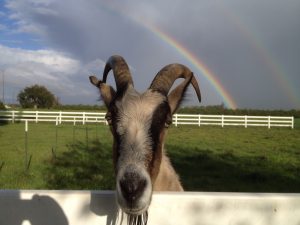
When Dr. Jaxon asked if the American flag has agency, Hayden and Tim pointed out that it does but only if people give it power. Of course this then prompted us to research the definition of agency, and Brady referenced Latour’s example of a shepherd who has built a fence to contain his sheep while he sleeps at night. Here we see the fence having agency, as it mediates the relationship between the shepherd and the sheep. The fence has agency and is perceived as an actant, since “surveillance of the sheep is both displaced and enhanced – the shepherd’s relationship with the sheep goes on without his constant vigilance or the need for his physical presence at all” (Brandt and Clinton 353).
Ben examined how literacy emerges from social practices that need literacy, mentioning how literacy is essentialist, where we look at literacy as a thing, a practice, and an outcome. Through some of his examples, Ben referred to Sumerian coins. Sumerians used the coins to facilitate trade, which led Ben to ask “how can literacy possibly function as a pre-existing ‘participating actor’ in that situation? Doesn’t the situation need to come first?” A useful way to analyze Ben’s question goes back to the ancient debate of what came first – the chicken or the egg. Don’t we need the chicken to lay the egg, but first and foremost, wouldn’t the chicken need to be hatched from an egg? Good stuff.
Alondra focused on the practicality of literacy in other countries. She reminded us that if literacy is practiced differently outside of the United States would their definitions of agency in literacy change? Bouncing back to the chair example, would other countries draw the same connections to literacy and agency as we have done, if they no longer had a need for the chair? Alondra mentioned how people crave to be innovative for technology and literacy, but when is enough, enough? When is something seen as valuable in society?
Brooke asked if we could define tools and technology in literacy. Brandt and Clinton unravel the complexities between orality and literacy. How important is technology for literacy? Brandt and Clinton debunk the myth that to be a literate society technology must be involved, stating “one was a reexamination of oral societies to show that even without the technology of literacy oral people exhibited logical reasoning, historical consciousness, skepticism, differentiation, and complex organization” (341). Simply, orality aligns directly with literacy. Alondra mentioned Indigenous communities that pass down knowledge and traditions through oral communication, a tool used to administer legacies between generations before written texts were utilized.
In Ferguson and Lemieux’s essay, they investigate the influx of technology in school literacies. When the COVID-19 pandemic hit, removing students from the physical classroom, digital platforms like Zoom were prevalent and deemed a necessity to prevent students from falling behind. However, not all were peachy keen. Ferguson and Lemieux disregard virtual platforms as beneficial, and insist that they divided students – removing them from the interpersonal and local literacy connections formed from sharing ideas with peers, the lack of casual conversations involving details of daily life, and subjected students to isolation behind a computer screen of black boxes.
Yet, on the other hand, the asynchronous learning environment thrust onto students of all levels formed an appreciation for the new-normal of those in graduate school. As Ferguson and Lemieux state:
In the midst of newly imposed sanitary restrictions, supply shortages, heightened anxieties, and modes of survival, it seemed essential in our case to adopt asynchronous teaching practices with adapted learning outcomes. Trying this teaching disposition for the first time, I felt students could breathe and have space to develop their thinking more privately… (212).
One thing I am certain of, it sure does feel good to resume in-person classes. Not only have my literacy skills increasingly developed, but I cherish the relationships that can only be built from continuous discourse and engaging curriculum.
To help make sense of all the new theories and ideas presented in our readings, we took to the whiteboard. When trying to pinpoint what a literacy event consists of, weather was brought up. Ben compared literacy to weather, where it is happening on a global scale, but we tend to only care or pay attention to what’s happening locally and our surroundings. Brooke added to this idea, with her revelation that weather has agency, since it remains out of our control. We might be able to affect it in the slightest way through climate change, however, we don’t get our ideal weather daily or have full control over what happens next. 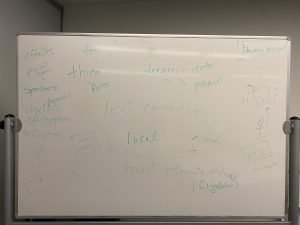
In addition to describing weather as a literacy event, Hayden started drawing on the whiteboard a rhizomatic strawberry plant. The strawberry plant flowers, seeds fall and create new sprouts, strawberry plants have stolons (runners), and the original plant would be considered the remote office. We see this depicted in Ferguson and Lemieux’s passage, “These material-discursive and affective shifts set the tone for éclosions to take place in individual spaces, as well as in collective virtual spaces. Here, the remote office serves as an example of a sprouting environment and the online classroom as a pathogenic ecosystem” (212). Understanding literacy is a complex adventure, but breaking it down into real-life examples helps us decode and digest the infinite possibilities and forms literacy displays.
After our class session and reminiscing on my colleagues’ thoughts about literacy, I am left with a few unanswered questions. And I am totally open to the idea that these answers may vary, depending on who is contributing.
- Is literacy a one-size fits all practice? If our individual interpretations of what literacy is or if it contains agency differ, can there be a collective definition of literacy?
- Literacy appears to be malleable – unique to each setting. Is it possible to predict the impact technology and asynchronous teaching will have on current and future generations’ literacy? When do the pros outweigh the cons of digital literacy? And what does that look like for each student?
- At what point do our local connections have more influence than global connections? Since society is constantly evolving, when does the responsibility fall on each of us to determine which is the most appropriate action to follow?
 Author’s Bio: Cassidy Ulery is an English Graduate student at CSU Chico, pursuing a concentration in Language & Literacy. She is currently teaching Freshman Composition at Chico State, where she’s able to fulfill her dreams of becoming an educator. Originally from the Bay Area, Cassidy completed her undergraduate degree at CSU Monterey Bay, and has been a Chico transplant since January 2022. When she’s not reading, writing, or grading, you can find her binging horror films and series. Cassidy plans on centering her thesis around the rise of Chicana rhetorics.
Author’s Bio: Cassidy Ulery is an English Graduate student at CSU Chico, pursuing a concentration in Language & Literacy. She is currently teaching Freshman Composition at Chico State, where she’s able to fulfill her dreams of becoming an educator. Originally from the Bay Area, Cassidy completed her undergraduate degree at CSU Monterey Bay, and has been a Chico transplant since January 2022. When she’s not reading, writing, or grading, you can find her binging horror films and series. Cassidy plans on centering her thesis around the rise of Chicana rhetorics.
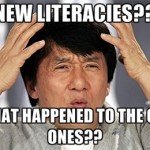
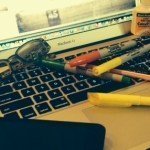
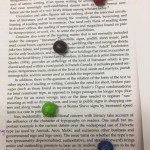
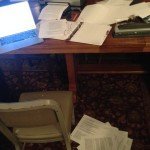
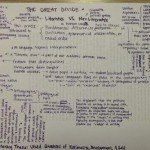
One Reply to “Cassidy Ulery: Curated Blog for Week 4”